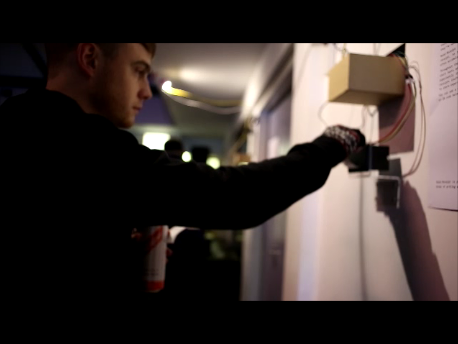Here’s Clive Scott, translator of Baudelaire and Rimbaud, on literary translation as a “centrifugal practice”.
“On the one hand, I am imagining a centripetal attitude to text, a continual return to a source text, which believes that this source text fully possesses itself in its linguisticity; that the literary is a stable constant within it; that what one must garner from it is its meaning, by interpretation. On the other hand, my hand as it were, is the centrifugal practice of text, which believes that the text is constantly in search of itself; that it does not comprehend itself; that it has yet to fulfil itself.” (Source)
So if we take this centrifugal attitude to the text, Scott argues, what follows is that any translation will cause the text, as he puts it, to “[fan] out into multiple versions of itself” – these versions not just being various interpretations of its meaning, but “performances of the experience of reading it”.
This provides a way of rethinking and maybe rehabilitating the discredited idea that an artist might be a translator of scientific research. Because this is translation not as a faithful return to a source that knows itself, and has a stable meaning, but as an imaginative multiplication of the possibilities inherent in an engagement with an excessive experience. Maybe the scientific text, the journal article, doesn’t behave like that: but the experiment itself might be such a multiple, expansive, contested and shifting object.
The translation of the experiment is not a matter of disciplining the imagination then, but of employing it to develop the inherent potential of the experimental scenario, which in this reading is no longer fully owned by any one discipline. This is very much the spirit of translation and enquiry we’re trying to develop with the Hubbub project.
~~~~~~~~
Peter Vickers discusses the 18th-century instrument makers who successfully made achromatic telescopes by combining two lenses made of different kinds of glass, but managed this based on a false analogy, taking their lead from the supposedly different refractive properties of the lens and the humour of the human eye. (Source) In fact, as Vickers notes, the eye suffers from exactly the kinds of “chromatic aberration” as previous telescopes, only corrected in the brain. Vickers’ point is about the difficulties of deciding which parts of a theory are involved in making a prediction; but for thinking about the role of imagination, the interest lies in this ambiguous relationship between a system of knowledge, later abandoned, and its dependent but surviving invention. We can see the usefulness of the false analogy, the train of thought which rattles loose enough to jump tracks, or the leap of imaginative connection that misfires but lands somewhere hospitable. We need to make room for these kinds of serendipitous achievements too.
~~~~~~~~
Translations of three secular chansons by the Renaissance composer Josquin des Prez (d.1521):
Faulte d’argent
I did it for the vine, I did it for the gram
a force de batture, sent letters to sault
Ligeti’s stochastic hammer
in the ditch below the walls.
I, Josquin des Prets, otherwise J.p.
Jo. de Pratis, Josquini, Joskin Dascanio etcetera
meadowed in loosestrife
quail running at the bailiff’s knock
lightly through rubble the
popcorn at the end of its bellcurve
the consonants dragging their ligatures
along empty autostrade
sparrow without an excuse
nor a funding proposal nor shoes
Douleur me bat (Motivic cells remix)
slapped by dollars
nux vomica
desire dressed me
protrusions (blebs)
vesicular trafficking
bleb-to-bleb
I’d prick faded nylon
I’d grab a corby press
I’d clip acetate statins
and sad billfolds
a goat’s embrace
in wolfskin wallets
in rice paddy folds
in frog bone brace
in biscuit palette
to crease financial trysts
to fix your orthodontist
up banks the Tiber mist
Plusieurs regretz
Janus-faced with a silent J, or condemned to the adjective. Collapsed after frosts, exposing moon-milk cavities in tufa. 19 + 17 + 13 + 11. At the start of the performance 1000-lire notes were dipped in paste and gently layered all over the surface of his face. Line up your receipts from last month and ask yourself if there’s something wrong. Iron wires and gold threads passing under water. 9 + 19 + 21 + 11. A moment later, his tuxedo spattered with gastric acid and mucus. The nearby volcanoes have upset the usual ratio of isotopes. The mathematician nicking a baboon’s fibula to make her calendars. Lightly through rubble the jewelweed popping in the heat.
~~~~~~~~
Parts of this first aired at ‘MindSpace’, 25 March 2015. The reference to Vickers is adapted from a separate paper.
 Image: Nathan Jones/Sam Skinner
Image: Nathan Jones/Sam Skinner





